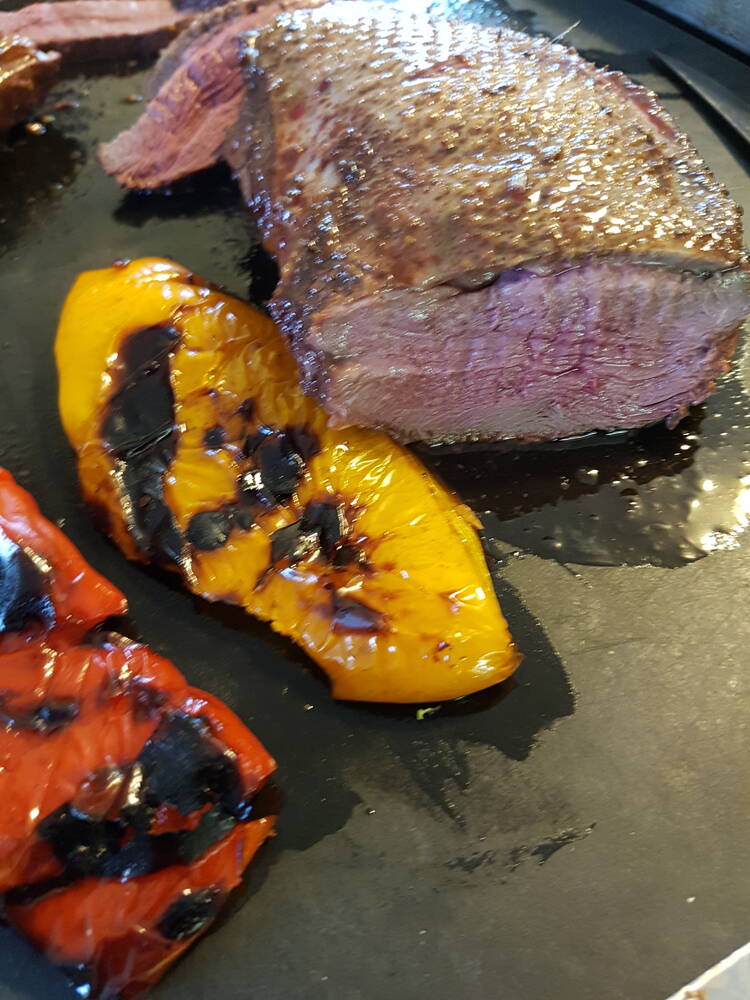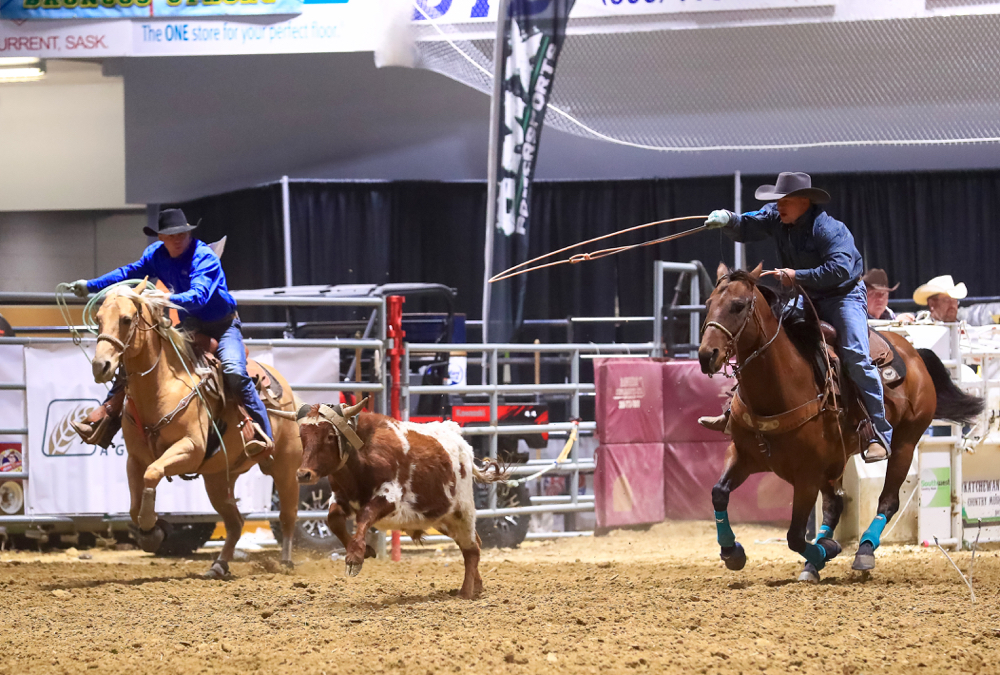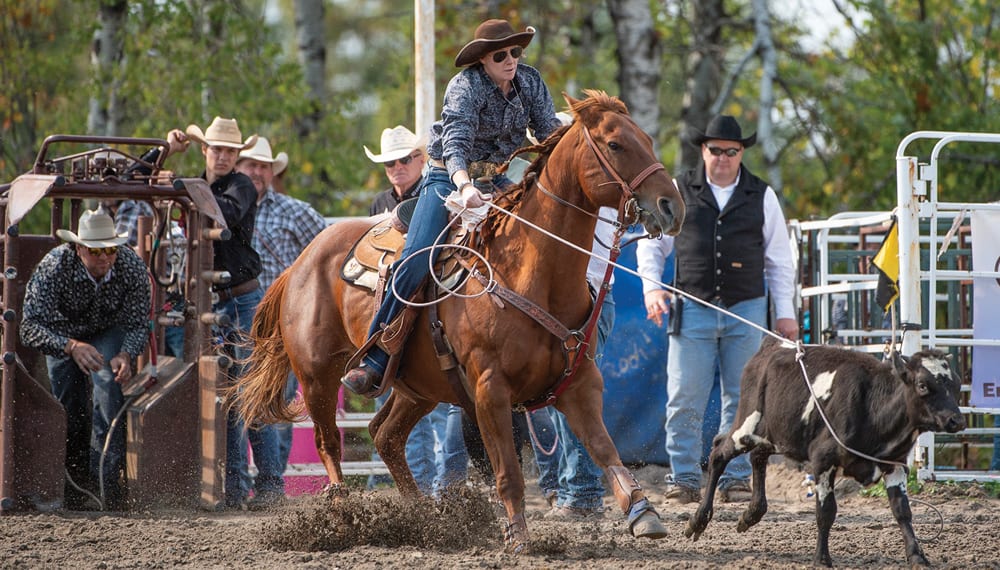School and sports have long been a part of teenage life. Besides building character, stamina and instilling a sense of camaraderie in youth, the physical aspect of sport serves as a relief valve, not only from the cerebral pressures of getting an education, but also for the stress of growing up.
Just over a decade ago in Manitoba, rodeo became a new sport option for provincial students, according to Orville Brown, chairman of the Canadian High School Rodeo Federation.
This year was the first time the Manitoba chapter had hosted the national championship, and the first year that Canadian Junior High level rodeo athletes were able to compete at the top of the sport in their own event level.
Read Also

Giant Canada geese have gone wild in Manitoba
Giant Canada geese are seemingly everywhere and can be fine table fare for local hunters, but 70 years ago, they were borderline extinct.
Unlike other sports, what makes high school rodeo unique compared to football, hockey and basketball, is the extra element of horsemanship and a chance to experience the extreme thrills of riding rough stock such as bulls and broncs.
ANOTHER SPORT
“It’s just another sport,” said Brown. “Those who are involved in it take it just as seriously as anything else. They practise and practice, and show a lot of dedication.”
Participants pay entry fees and compete for travel money, scholarships, saddles and buckles. The total cash value of post-secondary scholarships alone at the national championship last week was $17,000.
Although the cost of participation means that kids with a ranching background whose parents already own horses, trucks and trailers make up the majority, urban students are encouraged to participate in training clinics and events.
Under an informal “buddy system,” they can even borrow a horse or specialized gear, which helps to connect urbanites with the livestock industry, he added.
“It gives kids who aren’t involved in rodeo a real opportunity to get in to rodeo,” said barn boss Francis Smith. “That’s the biggest thing that high school rodeo does.”
At the Canadian championships held in Virden last week, about 200 athletes from the four western provinces competed in 13 different events.
In a rough-and-tumble sport, injuries happen, just like in hockey and football.
RISKS INVOLVED
On Thursday, a moment of silence was observed for Makwala Derickson-Hall, a member of the British Columbia chapter who was killed earlier this summer in a bull-riding accident at a rodeo in Valemount, B.C.
“There’s going to be some injuries, but it’s fairly safe,” said Brown. “The kids all wear flak jackets and helmets, and the stock is set for them more so. There’s some rank bulls, but they won’t be as rank as in the major leagues.”
Contestants in the junior high level ride younger bulls or steers, he added.
For girls, there’s pole bending, barrel racing, and goat tying. They aren’t allowed to compete in bronc or bull riding, but they may compete in team roping events alongside boys.
The sport is growing every year, said Brown. Even as students graduate and move on to the college and professional rodeo circuit, more newcomers arrive to fill up the ranks. Currently, there are 150 Manitoba students registered in the sport, and the organization has divided the province in half to form an east and west side in the hopes of encouraging more local rodeo events reducing travel burdens on parents.
MHSRA president Aaron Lee, who will enter his senior year next fall, has competed in the rodeo events for seven years. He recently returned from the U.S. national finals in Gilette, Wyoming, where he and his partner Erin Cathcart finished 22nd in team roping out of 210 competing teams.
Lee may have an unfair advantage, he admits. He lives at the Wallace PFRA pasture with his stepdad, who is the pasture manager.
“I got a summer job as a student there, so I get to ride all day, checking cows,” he said.
Besides the allure of college scholarships, being part of a larger “family” – the sporting community – is part of the attraction, said Lee.
FAMILY TRADITION
Behind the bucking chutes, B.C. resident Clint Maier, who seconds before had just finished a 60-point ride on a saddle bronc, said that rodeo has long been a tradition in his family.
He used to play hockey, but quit after it started interfering with his rodeo life.
“High school rodeo is great. I’d encourage anybody to do it,” said Maier.
Joanna Fennel, from Armstrong, B.C., a four-year veteran of junior and high school rodeo in the team roping and breakaway, said that her level of the sport is good preparation for higher levels, from college to pro.
“It’s a lot of fun and it gives you an incentive to stay in school. You can’t really fool around if you’re in high school rodeo,” said Fennel, who in the future plans to compete in college rodeo and pursue a sports medicine degree.
“My dad was in rodeo before, so that’s kind of why we do it – to keep the tradition alive.”
———
According to the website of the United States-based National High School Rodeo Association, high school rodeo began in the 1940s after a Texas educator and part-time rodeo cowboy observed that local youth were heading out to the town’s rodeo grounds to rope steers after school and wondered why the sport couldn’t be included as an official activity.
Claude Mullins later took a superintendent job in Hallettsville, Texas, and with the help of a local attorney and pharmacists – both of whom also operated cattle ranches, organized the first state-wide championship high school rodeo in 1947.
By 1949, the concept had spread to other states, and the first national high school rodeo event was held.
Over the years, even as the sport spread to Canada and Australia, the rules for eligibility have stayed the same: good character and passing grades.


















